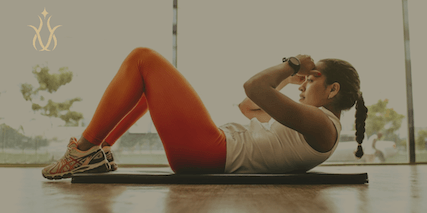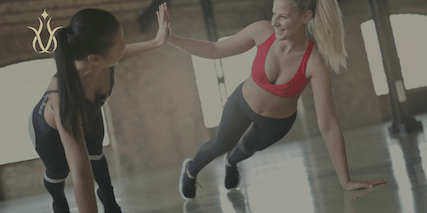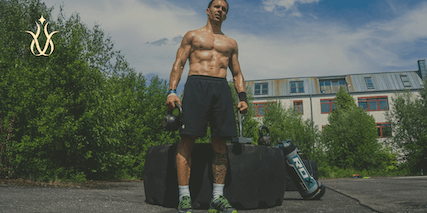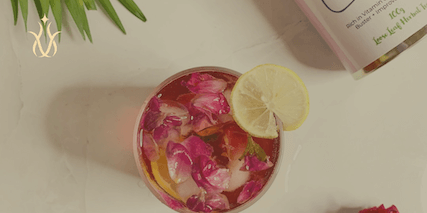Unlock the Fountain of Youth with the best Anti-Aging Exercises! Discover the Best Exercises to Boost Energy, Improve Strength, and Promote Youthful Vitality. Revitalize Your Body and Embrace a Youthful Energy Today!
Introduction to Anti-Aging Exercises
Growing older is a part of life we all must embrace. However, that doesn’t mean we should surrender to the detrimental effects of the aging process. On the contrary, we can take control, enhancing our quality of life and perhaps even adding more years. And our strongest weapon in this fight against time? You’ve guessed it – exercise. But the question is, just how beneficial is it? Could regular physical exercise be the secret to delaying the inevitable aging process?
A substantial body of scientific research supports the correlation between regular exercise and a slower aging process. For instance, a study published in the British Journal of Sports Medicine reveals that individuals who consistently engage in leisure-time physical activity throughout their life have a biological aging advantage of up to 9 years over sedentary individuals. And that’s just the tip of the iceberg!
In this article, we will embark on a journey unveiling the potent relationship between exercise and aging. We’ll explore various types of activities, from cardiovascular and strength training to flexibility and balance exercises. And we’ll offer insightful, practical advice on safely incorporating these anti-aging exercises into your daily life. Our ultimate goal? Helping you stay as healthy, vibrant, and youthful as possible for as long as possible.
But before we plunge into the specifics, let’s understand why regular physical activity is crucial to our well-being. After all, knowledge is power, and the more we comprehend the ‘why’, the more likely we are to implement the ‘how’.
Importance of Exercise in Aging
We all strive for a long, fulfilling life, don’t we? Imagine having the energy, vitality, and good health to make the most of your golden years. Sounds incredible, right? However, to reach that stage, we need to understand exercise’s influential role in the aging process.
Regular physical exercise brings a cascade of health benefits that can keep us youthful inside and out. Physical activity strengthens the heart and lungs, enhances muscle mass, and boosts our metabolism. It keeps our bones robust, improving balance and reducing the risk of osteoporosis. It supports mental well-being, combating anxiety and depression while enhancing cognitive abilities.
Scientific evidence:
A comprehensive study published in the Journal of Aging and Physical Activity shows regular physical exercise can extend life expectancy and improve the quality of life in older adults. The research highlights that individuals who remain physically active are less likely to experience chronic diseases such as heart disease, diabetes, and certain types of cancer. They’re also more likely to maintain their cognitive function, which is essential for independence and overall well-being.
The role of exercise in longevity is further emphasised in a research piece in the Journal of the American Geriatrics Society. The study states that even low-intensity exercise, such as walking, can add years to one’s life. Moreover, regular exercise enhances the immune response at a cellular level, providing a critical defence against infections and diseases.
However, the advantages of regular exercise extend far beyond physical health. For example, exercise can be a potent mood booster, reducing stress and anxiety while promoting well-being. Indeed, a study in the American Journal of Psychiatry reveals a lower incidence of depression in individuals who engage in regular physical activity.
It’s clear. Regular physical exercise can slow the aging process and help us retain our youthfulness. But the question remains – which activities should we incorporate into our routine? And how should we go about it to maximise the benefits while minimising the risk of injury? In the forthcoming sections, we’ll explore these questions and more, providing a roadmap for your journey towards healthy aging.
Anti-Aging Exercises and Mental Health
Let’s start with the mind. Exercise isn’t just about physical fitness; it also plays an integral role in our mental health. Studies show that regular exercise can improve cognitive function, leading to better concentration, sharper memory, and enhanced creativity. For example, one study published in the Journal of Clinical Psychology found that older adults who incorporated regular exercise into their routine significantly improved cognitive functions such as attention, processing speed, and memory.
Exercise also helps in managing mental health conditions like depression and anxiety. According to research from Harvard Medical School, aerobic exercise assists in reducing levels of the body’s stress hormones, such as adrenaline and cortisol. It also stimulates the production of endorphins, the body’s natural mood elevators.
Exercise and Sleep Quality
Next, let’s talk about sleep. We all know a good night’s sleep is vital for our well-being, right? Well, regular physical exercise can help improve our sleep patterns. For example, a Journal of Clinical Sleep Medicine study found that older adults who participated in moderate aerobic exercise reported significantly improved sleep quality.
The research suggests exercise can help regulate the body’s sleep-wake cycle, promoting restful, uninterrupted sleep. Furthermore, exercise can aid in reducing insomnia, a common problem among older adults.
Exercise and Stress Reduction
Moving on, let’s discuss stress. Exercise is a fantastic stress-buster. It triggers a physiological response that aids in reducing stress levels. The British Journal of Sports Medicine published a study stating that just 20 minutes of physical activity can help reduce stress by increasing the production of neurotransmitters, like serotonin and norepinephrine, which are key in mood regulation.
Exercise and Skin Health
Did you know exercise could be the secret to glowing, youthful skin? By increasing blood flow, exercise helps nourish skin cells and keep them vital. Blood carries oxygen and nutrients to working cells throughout the body, including the skin. Better circulation from regular exercise can also help flush cellular debris out of the system and help regain that youthful glow.
A study published in the Journal of Dermatology found a direct correlation between regular exercise and slower skin aging and reduced sagging skin. The study found that people over 40 who exercised regularly had skin that resembled the more supple, elastic skin of people in their 20s and 30s.
Exercise and Bone Health
Exercise training is crucial for maintaining strong, healthy bones. Weight-bearing exercises, in particular, can help increase bone density, reducing the risk of fractures and osteoporosis. A study in the Journal of Bone and Mineral Research found that high-intensity resistance and impact training improved bone mineral density, structure, and strength in postmenopausal women with low bone mass.
Exercise and Heart Health
Cardiovascular activities like running, swimming, and cycling increase your heart rate. As a result, they can significantly reduce your risk of heart disease. A report from the American Heart Association states that regular physical activity, including moderate-to-vigorous endurance training, can reduce the risk of heart disease and stroke.
Age-Specific Exercise Considerations
As we continue our exploration of exercise’s role in staying young, it’s essential to highlight that not all exercises are one-size-fits-all. Just as our bodies change with age, so should our exercise routines. Therefore, tailoring our workouts according to our age maximises the benefits of exercise, reduces the risk of injury, and ensures our safety.
During our 20s and 30s, we’re typically at our peak in strength and endurance. So it’s the ideal time to engage in higher-intensity activities like running, High-Intensity Interval Training (HIIT), and weight lifting. But as we transition into our 40s and 50s, we must consider our body’s changing needs. For instance, maintaining muscle mass and flexibility becomes increasingly important, so incorporating strength training and flexibility exercises like yoga or pilates into our routine can be highly beneficial.
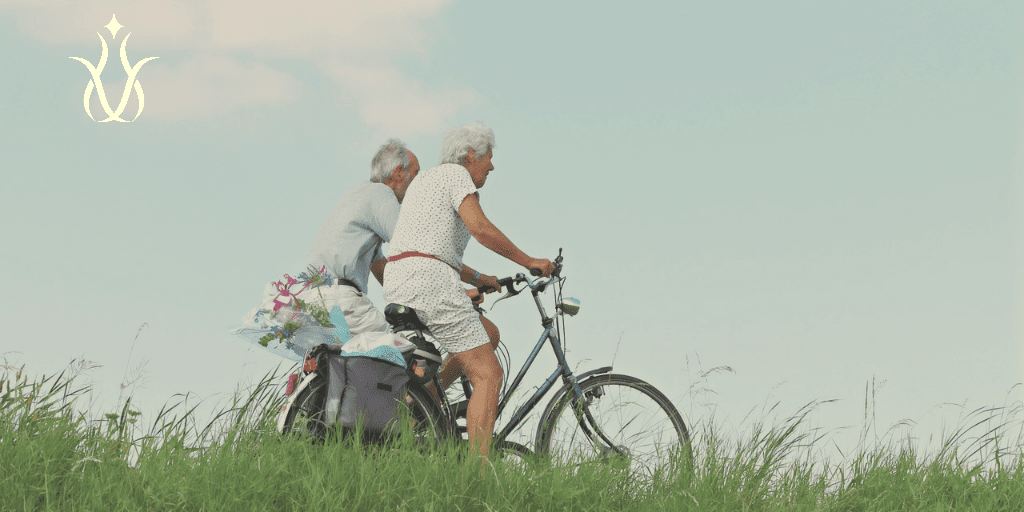
In our 60s and beyond, the focus often shifts towards maintaining balance and mobility. Exercises like Tai Chi, walking, and swimming can be excellent choices as they are gentle on the joints yet provide great cardiovascular benefits.
A study in the British Journal of Sports Medicine notes that as we age, a balanced approach to anti-aging exercises can help maintain overall health and prevent chronic diseases. The research recommends a combination of moderate-intensity aerobic, muscle-strengthening, and balance exercises for older adults.
Safety is also paramount when considering age-specific exercises. We face challenges such as decreased bone density or joint flexibility as we age. Hence, it’s crucial to listen to our bodies, adapt to our changing needs, and take precautions to prevent injuries. Always remember consistency is more important than intensity when reaping the benefits of exercise.
The key takeaway here? Your age should never be a barrier to maintaining an active lifestyle. Instead, it should guide your exercise choice, helping you stay fit, vibrant, and youthful at any age. In the next chapter, we’ll dive into the specific anti-aging exercises that can keep you in top shape throughout the various stages of life. Stay with us!
Best Anti-Aging Exercises for Staying Young
Let’s delve into the best anti-aging exercises to keep us youthful and vibrant. Each exercise brings unique benefits, contributing to our well-being and slowing aging.
Cardiovascular Exercise
Cardiovascular or aerobic exercises are vital for maintaining heart health and boosting endurance. They’re a crucial component of any exercise routine at any age.
Walking
Walking is a fantastic exercise that people of all ages can enjoy. It strengthens the heart, improves circulation, and even boosts mood. Harvard Medical School published a study showing that walking for just 2.5 hours a week—only 21 minutes a day—can reduce heart disease risk by 30%.
Integrating walking into your daily fitness routine can be as simple as walking briskly during your lunch break, choosing stairs over elevators, or parking a bit further away from your destination.

Running
Running is another excellent cardiovascular exercise that strengthens the heart and improves overall fitness. However, it’s important to employ proper techniques and precautions to avoid injury. The Journal of Orthopaedic & Sports Physical Therapy recommends starting slowly, gradually increasing your distance and speed, and choosing good-quality running shoes that offer proper support.
Swimming
Swimming is a fantastic, low-impact endurance training exercise, particularly beneficial for those with joint issues. It works your whole body while giving your cardiovascular system a workout. A report by Swim England suggests that swimming regularly can reduce the risk of heart disease and stroke by as much as 35%.
Try to swim at least twice a week, alternating between different strokes to work different muscle groups and improve overall fitness.
Cycling
Cycling is another top-notch cardiovascular exercise that also strengthens your leg muscles. A study in the Journal of Cardiovascular Disease Research states that regular cycling endurance training reduces the risk of heart disease by 50%.
Incorporate cycling into your routine by riding your bike to work, taking a weekend bike ride, or trying a spin class at your local gym.
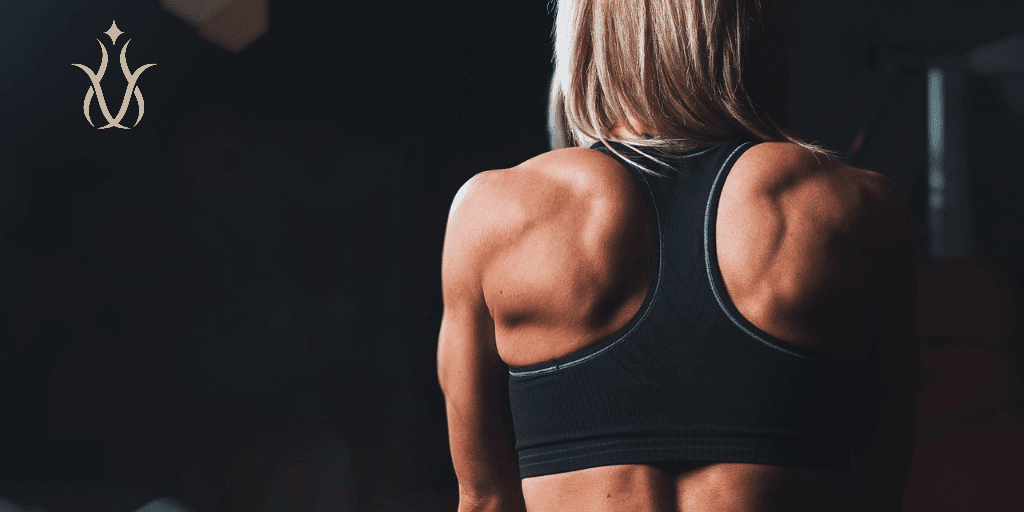
Strength Training
Strength training is crucial for maintaining muscle mass as we age. A study in the Archives of Physical Medicine and Rehabilitation suggests that regular strength training can slow down the muscle loss associated with aging.
Remember, when weightlifting, proper form is paramount to prevent injury. Always start with light weights and gradually increase as your strength builds.
Resistance Exercise
Resistance exercise benefits bone health and muscle mass. Resistance exercise involves using resistance, like dumbbells or resistance bands, to stimulate muscle growth and increase strength. The Journal of Bone and Metabolism reports that resistance exercise can improve and help maintain bone density and structure.
Try incorporating a resistance exercise, such as leg presses, bicep curls, and squats.
Flexibility and Balance Exercises
Flexibility and balance exercises help maintain range of motion and stability, which is especially important as we age.
Yoga
Yoga promotes flexibility, balance, and mindfulness. It also has significant benefits for older adults, improving balance and mobility, as noted by a study in the International Journal of Yoga.
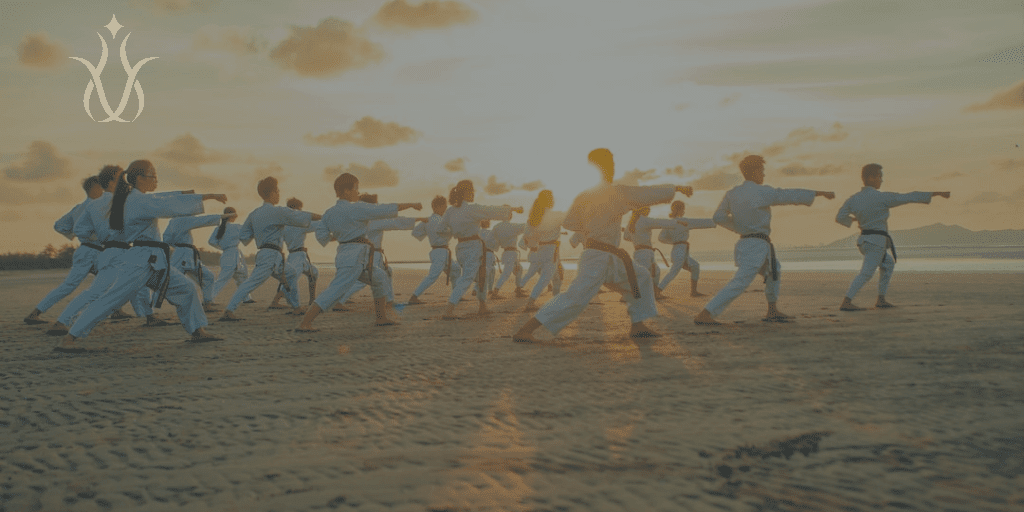
Tai Chi
Tai Chi is excellent for balance and coordination. In addition, a study published in the Journal of Alzheimer’s Disease found Tai Chi could improve cognitive function in older adults, promoting mental agility.
Pilates
Pilates strengthens the core and enhances flexibility. In addition, it’s low impact, making it suitable for all ages. For beginners, joining a Pilates class or following an online tutorial can be a great start.
High-Intensity Interval Training (HIIT) & Interval Training
High-intensity interval training workouts involve short bursts of intense exercise followed by recovery periods. It’s excellent for cardiovascular health and metabolic function, according to the Journal of Obesity. If you’re new to High-Intensity Interval Training workouts, start with a brief warm-up, a short burst of HIIT exercise, and a longer recovery period.
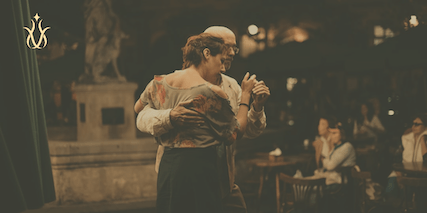
Dancing
Dancing isn’t just fun—it also improves balance, coordination, strength, and cardiovascular health. In addition, a study in the New England Journal of Medicine suggests that dancing can enhance cognitive health, reducing the risk of dementia in older adults.
Exercise Nutrition
While physical activity is a key component in staying young, it’s equally important to fuel our bodies correctly. Proper nutrition supports regular exercise, providing us with the energy we need and aiding in recovery post-workout. So, let’s take a closer look at the importance of nutrient timing, hydration, and dietary considerations when keeping active.
When we talk about nutrient timing, we’re referring to what and when you eat in relation to your exercise routine. According to a comprehensive review in the Journal of the International Society of Sports Nutrition, consuming protein and carbohydrates before and after a workout can significantly improve performance and recovery. So, for example, a snack combining these two nutrients, like a banana and a protein shake, could be an excellent pre- or post-workout choice.
Hydration is another critical aspect of exercise nutrition. Staying hydrated helps regulate body temperature, lubricate joints, and transport nutrients for energy and health. According to the American Council on Exercise, a good guideline is to drink 500ml of water 2 hours before exercise, drink regularly during the activity, and rehydrate with water post-exercise to replace lost fluids.
As for dietary considerations, a balanced diet rich in fruits, vegetables, lean proteins, and whole grains will provide the nutrients needed for optimal health and exercise performance. However, the British Nutrition Foundation advises that those engaged in regular exercise may require slightly more protein to support muscle repair and recovery and potentially a higher intake of carbohydrates, particularly for endurance activities.
The takeaway here is clear: Exercise and nutrition are two sides of the same coin. So, to reap the most benefits from your workouts and maintain your youthful energy, supporting your anti-aging exercise regime with a balanced, nutrient-rich diet and proper hydration is essential.
Anti-Aging Exercises – Safety and Precautions
Safety must always come first in our journey to stay young through exercise. As we push our bodies to stay fit and vibrant, we must recognise our limits and take the necessary precautions. Let’s discuss the importance of proper warm-up and cool-down routines, the signs of overexertion and when it’s time to seek medical advice.
Warming up before exercise is like revving your car engine on a frosty morning; it prepares your body for the workout ahead. A review in the Journal of Strength and Conditioning Research found that an effective warm-up increases muscle temperature, accelerates oxygen uptake, and enhances metabolic reactions, contributing to better performance. This could be as simple as 5-10 minutes of light cardio, like jogging or cycling at a gentle pace.
Cooling down post-exercise is equally essential. It helps return your breathing and heart rate to normal and may reduce the risk of muscular stiffness. Stretching can be an excellent cool-down method, gradually relaxing your muscles and increasing flexibility.
However, even with the best precautions, listening to your body and being aware of signs of overexertion is essential. These could include dizziness, shortness of breath, excessive fatigue, or even pain during or after exercise. These signs shouldn’t be ignored, as they may lead to injuries or other health problems.
The American Heart Association advises that if any of these symptoms persist, it’s essential to seek medical advice. While staying active is important to keeping youthful and healthy, your safety should never be compromised. Remember, it’s okay to rest and recuperate if your body needs it.
Conclusion
Living an active lifestyle isn’t just about adding years to your life—it’s about adding life to your years. So why not start today? Incorporate a regular anti-aging exercise program into your routine and feel the difference. Remember, it’s never too late to start; every small step counts.
Ultimately, staying young is not just about the number of candles on your birthday cake. It is more about how vibrant and energetic you feel; regular anti-aging exercises are one of the best ways to ensure that. So let’s lace up those trainers, get moving, and celebrate the joy of staying young!
Frequently Asked Questions
Which exercise is best for anti-aging?
While there’s no singular “anti-aging” exercise, certain types of exercise can help mitigate some of the physical and cognitive declines associated with aging. A balanced fitness routine that incorporates multiple forms of exercise is generally the most beneficial. Here are some recommended exercises to promote overall wellness and longevity:
- Aerobic Exercise: This type of exercise, which includes activities like brisk walking, running, cycling, and swimming, is crucial for maintaining heart health, improving lung capacity, and promoting good circulation. Regular aerobic exercise can also help to maintain a healthy weight and reduce the risk of many chronic diseases.
- Strength Training: As we age, we naturally lose muscle mass, a condition known as sarcopenia. Strength training exercises, such as weightlifting or bodyweight exercises, can help to slow down this muscle loss, maintain bone density, and improve balance.
- Flexibility and Mobility Exercises: Activities like yoga and Pilates can help to maintain flexibility, improve balance, and enhance overall mobility. Regular stretching can also promote healthier joints and prevent stiffness.
- Balance Training: Balance tends to deteriorate with age, which can increase the risk of falls. Exercises such as tai chi, yoga, and specific balance exercises can help improve balance and coordination.
- Cognitive Exercise: Exercise isn’t just about the body; it’s also about the mind. Activities that require coordination, strategy, or quick decision-making can help keep the brain sharp. These might include dancing, table tennis, or other racquet sports.
- Mindfulness Activities: Incorporating mindful activities like yoga and meditation into your routine can help to manage stress, improve mental clarity, and boost overall well-being, all of which contribute to healthier aging.
Does weight lifting slow aging?
Weightlifting and other forms of resistance training can certainly have positive impacts on the aging process, contributing to both physical and mental health. Here are some of the ways weightlifting can help to slow certain aspects of aging:
- Maintaining Muscle Mass: As we age, we naturally lose muscle mass in a process known as sarcopenia. Regular weightlifting can help to counteract this muscle loss, maintaining strength and physical function.
- Bone Health: Weightlifting is a weight-bearing exercise which is known to increase bone density and decrease the risk of osteoporosis, a condition that weakens bones and becomes more common with age.
- Metabolic Benefits: Lifting weights increases the body’s metabolic rate, helps maintain a healthy body weight, and reduces the risk of developing metabolic conditions like diabetes.
- Improving Balance and Coordination: Regular strength training can enhance balance and coordination, reducing the risk of falls, a common concern as we age.
- Mental Health Benefits: Regular exercise, including weightlifting, has been shown to improve mood, reduce anxiety, and even boost cognitive function, which can be particularly beneficial as we age.
- Increasing Lifespan: Some research suggests that regular strength training may increase lifespan and reduce the risk of all-cause mortality. A study published in The Journal of Gerontology (2016) indicated that older adults who met twice-weekly strength training guidelines had a lower risk of mortality.
- Anti-Inflammatory Effects: Chronic inflammation can accelerate aging and lead to various diseases. Regular exercise, including weightlifting, has been shown to reduce systemic inflammation.
- Improved Insulin Sensitivity: Weightlifting can improve insulin sensitivity and glycemic control, which can help prevent or manage type 2 diabetes, a condition more common in older adults.
- Cellular Aging: On a cellular level, regular exercise, including weightlifting, is associated with longer telomeres—caps on the ends of chromosomes that shorten as cells age. Longer telomeres are associated with slower aging and reduced risk of disease.
Can exercise make someone look younger?
Yes, regular exercise can contribute to a more youthful appearance in several ways. Here’s how:
- Improved Complexion: Exercise enhances blood circulation, which can lead to a brighter, healthier-looking complexion. Regular physical activity also promotes the removal of toxins from the body through sweating, which can improve skin health and clarity.
- Healthy Weight Maintenance: Regular exercise can help to maintain a healthy body weight or facilitate weight loss, which can contribute to a more youthful silhouette.
- Muscle Toning and Strengthening: Strength training exercises can help to tone and tighten muscles, creating a more youthful and fit appearance. As we age, we naturally lose muscle mass, but regular strength training can counteract this effect.
- Improved Posture: Certain types of exercise, such as yoga and Pilates, can improve posture by strengthening the core muscles that support the spine. A straight, well-aligned posture can make one look and feel younger.
- Boosted Mood and Energy Levels: Regular physical activity boosts endorphins, often referred to as the body’s “feel-good hormones.” This can lead to improved mood, higher energy levels, and a more positive outlook, all of which can contribute to a more youthful appearance.
- Slower Aging of Cells: On a biological level, regular exercise can also slow the aging of cells. A study published in the journal Preventive Medicine (2017) showed that those who exercised regularly had significantly longer telomeres (the cap on the end of each strand of DNA that protects our chromosomes) than those who were sedentary. Shorter telomeres are associated with aging, disease, and a higher risk of early death.
Does exercise increase collagen?
Yes, regular exercise can indeed contribute to collagen production in the body, which plays a crucial role in maintaining skin elasticity and strength, promoting joint health, and supporting the structure of various tissues. Here’s how:
- Increased Blood Flow: Physical activity enhances circulation, which in turn facilitates nutrient delivery throughout the body, including to the skin. These nutrients aid in the production of collagen.
- Hormonal Regulation: Regular exercise helps in balancing hormone levels in the body. Certain hormones, like growth hormone, stimulate collagen production, and regular exercise can help maintain optimal levels of these hormones.
- Anti-Inflammatory Effects: Exercise has anti-inflammatory effects in the body. Inflammation can break down collagen, so by reducing inflammation, exercise indirectly helps to protect collagen.
- Oxidative Stress Reduction: Regular exercise helps the body combat oxidative stress, which is caused by free radicals. Free radicals can damage collagen, so exercise’s role in reducing oxidative stress can help protect existing collagen and support the creation of new collagen.
- Stimulating Collagen Synthesis: Certain types of high-intensity, weight-bearing exercises (like weightlifting or resistance training) have been shown to stimulate the production of collagen directly. This is particularly beneficial for joint health, as collagen plays a vital role in maintaining the integrity of cartilage.
- Sweat Production: Exercise promotes sweat, which helps to expel toxins and other waste products from the body, leading to healthier skin which is better able to produce collagen.
How often should I exercise for anti-aging benefits?
The UK National Health Service (NHS) physical activity guidelines recommend at least 150 minutes of moderate-intensity activity or 75 minutes of vigorous-intensity activity every week, plus strength exercises on two or more days a week. However, it’s always best to consult with a healthcare professional before starting a new fitness regimen, especially if you have any pre-existing health conditions.
Can exercise really slow down the aging process?
Yes, according to research. Exercise can promote a youthful cellular environment, slowing down the age-related decline at a cellular level. A study published in the ‘European Heart Journal’ found that regular exercise could keep the body young and healthy, reducing cardiovascular aging.
Are there specific exercises to reduce wrinkles and keep skin young?
There is no direct evidence that exercise can reduce wrinkles or tighten skin. However, regular physical activity improves circulation, promoting healthier skin by carrying oxygen and nutrients to your skin at a cellular level. Additionally, sweating can unclog pores and promote clearer and more supple skin.
I’m new to exercise. Where should I start?
Beginners should start slow and gradually increase their activity level. Starting with low-impact activities like walking, swimming, or yoga can be beneficial. It’s important to listen to your body and avoid pushing too hard too quickly to prevent injury.
How can I stay motivated to keep exercising?
Finding an activity you enjoy, setting realistic goals, and mixing up your routine can help keep you motivated. Additionally, consider finding a workout partner. Exercising with a friend can make your workout more enjoyable and keep you accountable.
What are the best online resources for anti-aging exercises?
There are several highly-rated fitness and wellness apps and online resources. Here are a few that are popular:
- MyFitnessPal: This app helps track diet and exercise to help users reach their fitness goals. It has a database of more than 6 million foods and hundreds of exercises.
- Fitbit: Fitbit offers a range of fitness trackers and smartwatches that track steps, sleep, heart rate, and other health indicators. The accompanying app allows users to analyse their stats, set goals, and track progress over time.
- Nike Training Club: This app provides a variety of workouts from professional trainers. It includes a range of workouts of various intensities and lengths, including yoga, targeted training programs, HIIT workouts and full-equipment workouts for all fitness levels.
- Aaptiv: Aaptiv provides audio-based fitness classes led by professional trainers, including running, strength training, yoga, and more.
- Strava: This fitness-tracking app is ideal for runners and cyclists. It offers accurate tracking, a social network of athletes, and personalised coaching.
- Peloton: Known for their high-quality exercise bikes, Peloton also offers an app with live and on-demand workout classes, including cycling, running, strength training, and yoga.
- 7 Minute Workout: This app is great for busy people. It offers HIIT workouts that only take 7 minutes to complete, with no equipment needed.
- Daily Burn: This online platform provides a variety of workouts, including cardio, yoga, strength training, HIIT workouts and more.
- Beachbody On Demand: This platform offers a comprehensive library of workout programs from famous trainers. It also includes diet plans and tracking tools.
- Sworkit: This fitness app allows you to customise and play personalised video workouts that fit into your life.
Resources:
Garatachea N (2015). Exercise attenuates the major hallmarks of aging. Available from: https://pubmed.ncbi.nlm.nih.gov/25431878/
Gremeaux V (2012). Exercise and longevity. Available from: https://pubmed.ncbi.nlm.nih.gov/23063021/
Venturelli M (2012). The role of exercise capacity in the health and longevity of centenarians. Available from: https://pubmed.ncbi.nlm.nih.gov/22883374/
National Institute on Aging, NIH. (2021). Four Types of Exercise Can Improve Your Health and Physical Ability. Available from: https://www.nia.nih.gov/health/four-types-exercise-can-improve-your-health-and-physical-ability
Mayo Clinic. (2019). Aerobic exercise: Top 10 reasons to get physical. Available from: https://www.mayoclinic.org/healthy-lifestyle/fitness/in-depth/aerobic-exercise/art-20045541
Harvard Health Publishing, Harvard Medical School. (2018). The importance of stretching. Available from: https://www.health.harvard.edu/staying-healthy/the-importance-of-stretching
American Heart Association. (2021). Resistance Training Exercise. Available from: https://www.heart.org/en/healthy-living/fitness/fitness-basics/strength-and-resistance-training-exercise
Disclaimer: This article is for informational purposes only and should not replace professional medical advice. If you have specific concerns or medical conditions, it is recommended to consult with a healthcare professional for personalised guidance and support.
Related Topics
The Remarkable Health Benefits of Olive Oil
The Ultimate Guide to Natural Skin Rejuvenation
Top 10 Health Spas for Ultimate Wellness
Revitalize Your Youth: Discover the Ultimate Natural Anti-Aging Solutions
